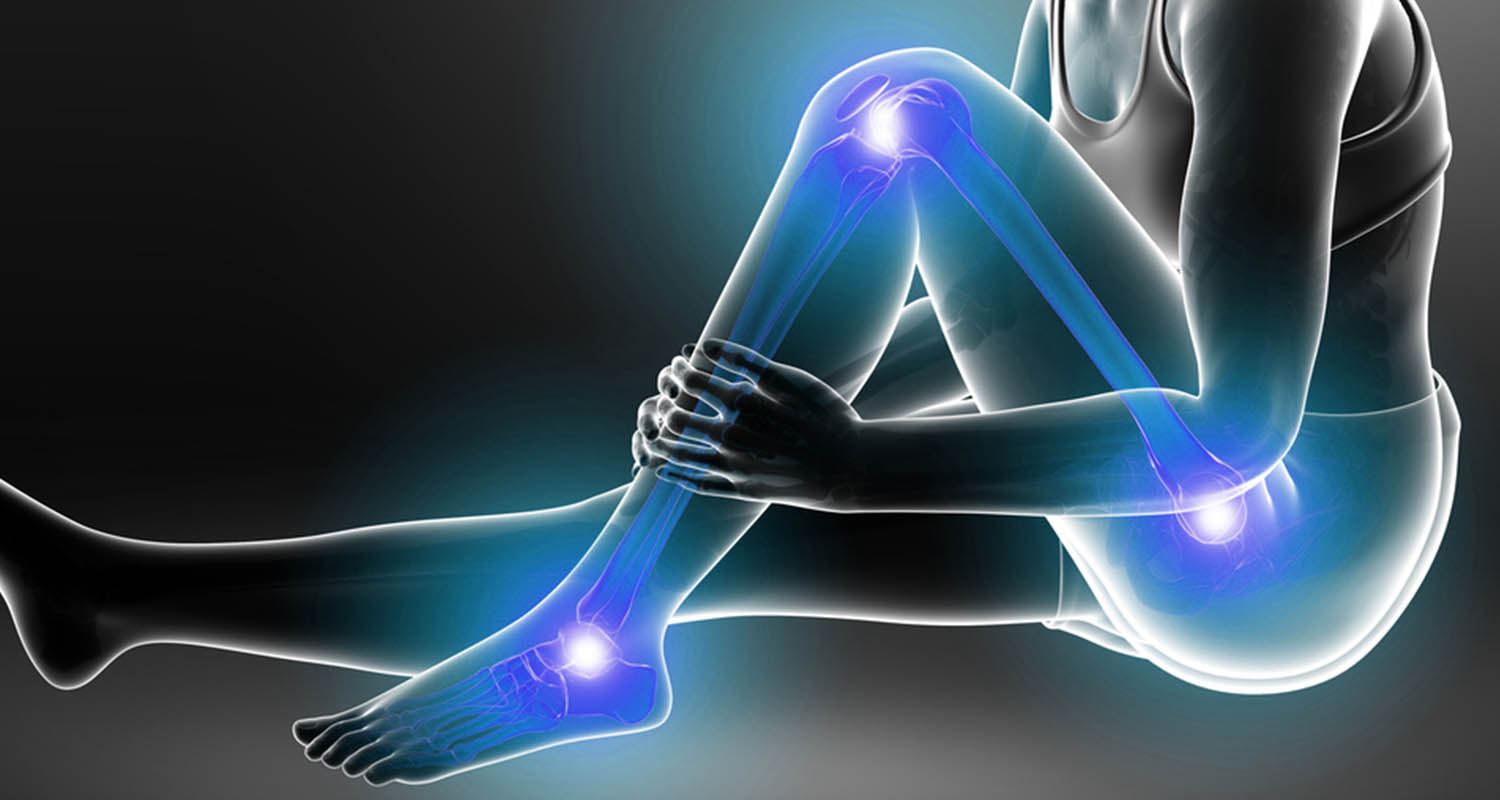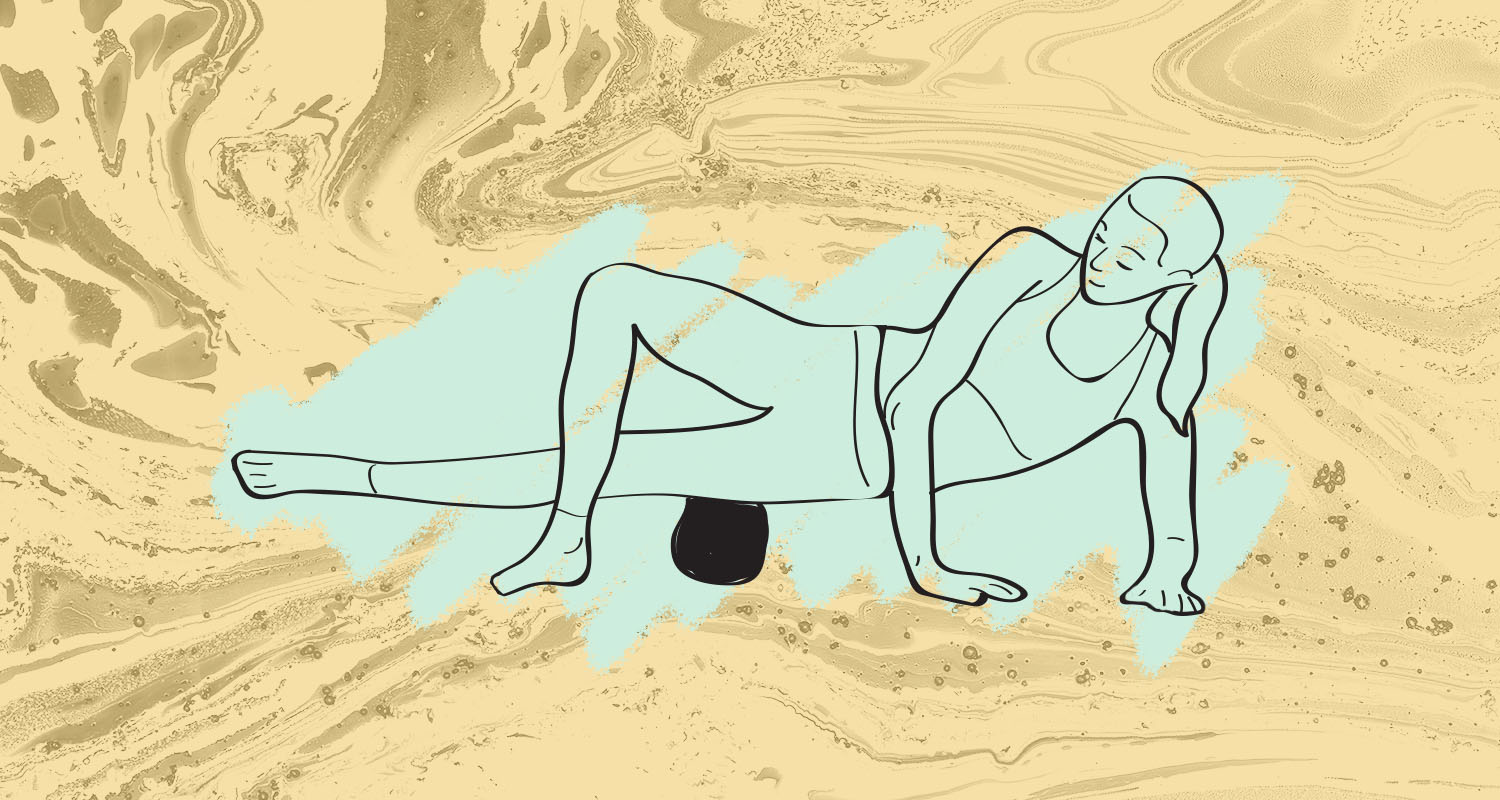
- Runner’s knee is a blanket term for common knee issues that people who run regularly may struggle with. It’s important to know which injury you have before you treat it.
- Knee pain after running is often caused by muscle weaknesses or imbalances.
- Runner’s knee can be painful—but it also can be easily prevented with the right shoes and exercises
- With the right icing, supplement, and stretching routine, it’s possible to treat runner’s knee at home—and get back to hitting the pavement pain-free
There are plenty of reasons to enjoy running — it gets your endorphins going, it’s a great way to enjoy the outdoors, and (when done the right way) can maximize your endurance and transform your body.
But if you’re dealing with runner’s knee, running? Yeah…not so enjoyable.
Runner’s knee is super common — so if you’re hitting the pavement on a regular basis, you’re bound to deal with it at one point or another. But what, exactly, is runner’s knee? What symptoms should you be on the lookout for? And — most importantly — how can you prevent and treat it so you can spend more time running and less time dealing with knee pain?
Related: The Best Way to Run for Your Joints
What is runner’s knee?

“Runner’s knee is basically a general term which encompasses multiple diagnoses,” says Trent Nessler, PT, MPT, DPT, National Director of Sports Innovation at Select Medical and creator of the Run Safe Program™.
If you’re dealing with knee pain, it’s important to understand exactly what’s going — that way, you can apply the right knee stretches to get you back on track (pun intended).
Here are some of the most common diagnoses that fall under the “runner’s knee” umbrella.
Patellofemoral Pain Syndrome (PFPS)

“In this joint, the patella rides in a groove in the femur,” says Nessler. “In some runners, the patella moves too much in that groove and causes pain.”
This can be caused by overuse, a muscular imbalance or tightness, poor hip-knee alignment, and even flat feet.
“[In] some cases, the under surface of the kneecap becomes worn and develops a rough surface. When this is the case, you typically hear crepitus (grinding) under the kneecap as you move your knee from flexion to extension,” explains Nessler.
IT Band Friction Syndrome

The pain shows up on the outside of the knee, as the knee moves from a flexed to an extended position. If the pain kicks in 5-10 minutes into your run, this is a good sign that you have ITBS.
More women than men experience IT band syndrome, and it affects just as many veteran runners as beginners.
It’s important to rest (as in take a break from running) as soon as ITBS shows up, so that the problem doesn’t become chronic.
Patellar Tendonitis

Meniscal Pain

Fibular Head Instability
“This is less common, but seen in some cases. [Fibular Head Instability] is felt on the outside of the knee and is commonly misdiagnosed as IT Band Friction Syndrome,” says Nessler. “The fibular head is held in place by the annular ligament. If this ligament is torn, then the fibular head will move back and forth during running causing the bursa in this area to become inflamed.”
How to prevent runner’s knee
A lot of runners deal with runner’s knee — but that doesn’t mean you have to. There are plenty of steps you can take to make sure your runs don’t leave you with aches and pains in the knee region.
Get the right shoes…

If you want to keep runner’s knee at bay, it’s important you get the right shoes for you — and the only way to determine the right shoe to maximize your performance? Getting a proper running evaluation.
“When we assist a runner in choosing a shoe, we typically do a running assessment,” says Nessler. “Using a 3D wearable sensor, we have the athlete run in three different types of shoes. This system will provide us with right and left IPA (initial peak acceleration — how well you control the foot into the ground), right and left ground reaction force at midstance, and stance time on the right and left. This allows us to directly see how well they are controlling the forces through the lower limb and which shoe provides them with the optimal performance.”
A running evaluation will give you key insights into how you run — and those insights will help you choose the right shoes to stay pain-free during your runs.
…and replace them often
You might have the perfect running shoe — but even the perfect shoe has an expiration date.
“Another problem we see with shoes is runners will use the same pair for a year or two. With time and an increase in mileage, the shoes begin to wear down and they lose some of their elastic properties, which results in less shock absorption,” says Nessler.
“This means that more of the ground reaction force at heel strike and midstance is absorbed at the foot and ankle and then at the knee…The more miles you put on the shoe, the less elastic recoil the shoe has — which can increase [the] potential for overuse injury.”
How often you need to replace your shoes depends on how often you run, but if you’re approaching the 500-mile mark, it’s definitely time for a new pair of kicks.
“Running shoe manufacturers vary on their recommendations, but most will tell you that you should replace your running shoes anywhere from every 300 to 500 miles,” says Nessler.
Strengthen your lower body and core

“Weakness throughout the lower kinetic chain can add to an increase risk for runners knee,” says Nessler. “If you address the most common physical weaknesses seen in the majority of runners [which occur in the lower body and core]…most will not only have a dramatic reduction in runner’s knee, but will [also] have a reduction in all lower limb injuries.”
In between runs, make sure you’re incorporating functional exercises like squats, lunges, and planks to strengthen your lower body and core — and to keep runner’s knee at bay.
How to treat runner’s knee
Obviously, preventing knee pain before it happens is ideal — but if you’re already dealing with knee pain while running (or pain after running), it’s all good. With a few small tweaks to your routine, like incorporating runner’s knee exercises, you can deal with your runner’s knee pain and get back to enjoying your runs.
Ice it up with cryotherapy

Icing your knee is a must to manage pain related with runner’s knee. “Swelling and pain inhibit strength…the longer the pain and swelling persist, the more it will impact strength,” says Nessler.
Depending on the kind of pain you’re dealing with, Nessler recommends two icing strategies.
If you’re dealing with patellar tendonitis, IT band friction syndrome, or fibular head instability, try an ice massage. Fill a paper or Styrofoam cup with water. Pop it in the freezer and once it’s frozen, peel half the cup away. Rub the exposed ice on your knee for 5 minutes. “[The ice massage] will create a layer of water between the skin and ice. This conducts the cold much better but can only be used for tissues that are close to the surface of the skin [like the above conditions],” says Nessler. Do the ice massage 3 to 5 times per day until your knee pain subsides.
If you’re dealing with PFPS or meniscal pain, Nessler recommends going the more traditional route and using an ice bag for 15 minutes 3 to 5 times a day until pain subsides.
You can also go the high-tech approach and immerse yourself in whole body cryotherapy, which will help eliminate swelling and inflammation, and also help with the pain.
Ibuprofen and NSAIDs can tamp down inflammation and help with pain, but they also wreak havoc on your gut. Check out the article below for natural pain relievers, like curcumin, that work just as well as Advil.
Related: Natural Pain Relief: 5 Ways to Relieve Pain & Inflammation Without Ibuprofen
Take collagen protein powder
If you’re dealing with runner’s knee (and the pain that goes with it), try adding grass-fed collagen peptides into your morning coffee or smoothie. Studies show that collagen protein powder can support joint health and reduce knee joint symptoms, including knee pain.[ref url=”https://nutritionj.biomedcentral.com/articles/10.1186/s12937-016-0130-8?utm_campaign=B2B+Website&utm_medium=email&_hsenc=p2ANqtz-8boAuPkblnh0HOMhfQk99V4tjBBfFKPMleWTkA7yq7T8edePwyz0iYKfdhzXSbTKHekqMS0lblBSQD0JK3Q3F_VwOChg&_hsmi=25837964&utm_conten”]
Stretch

Grab a vibrating foam roller (“The vibrating roller facilitates greater relaxation of the muscle and a more comfortable stretch through greater ranges of motion and aids in recovery following a hard run,” says Nessler) and go through Nessler’s recommended stretch routine on non-running days or after a hard run.
IT band stretch

Hip flexor/quad stretch

Hamstring/glute stretch

Calf stretch











